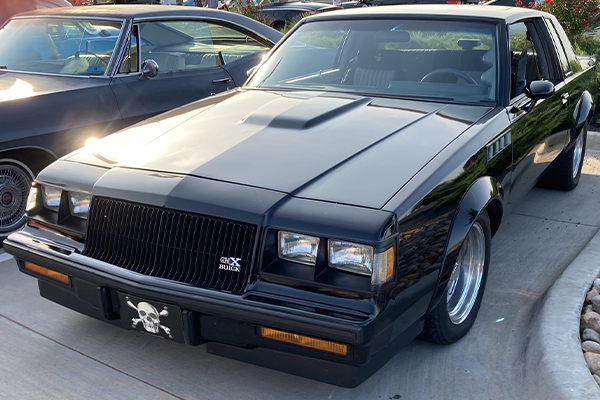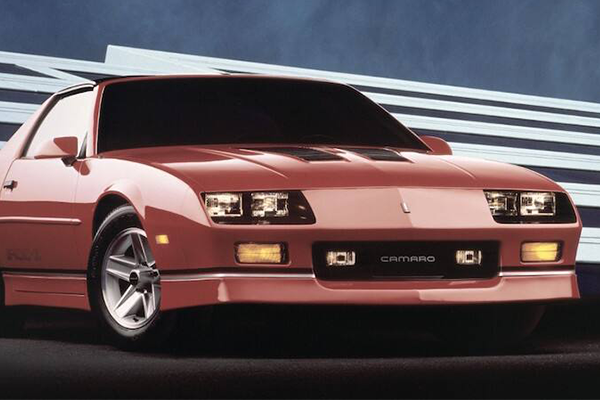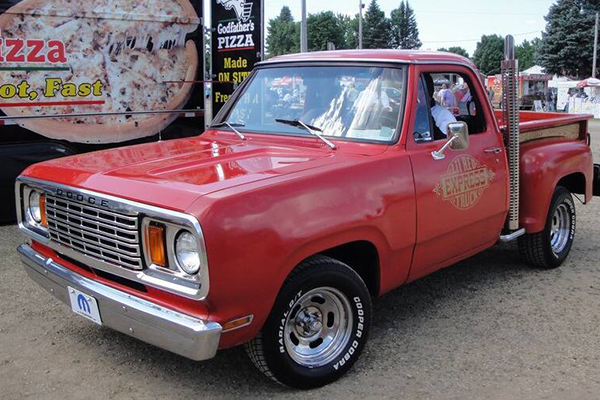In an episode of MotorWeek (May 8, 2015) titled “Over the Edge: Driving a R32 Nissan Skyline GT-R,” you can see what it’s like to drive Godzilla without “selling body parts” to get such a vehicle:
https://www.youtube.com/watch?v=HRLJPAqgiI0
The video calls the Skyline the “Holy Grail,” the “temptation of getting that forbidden fruit” that brings “so much joy.” And, what’s even better – you don’t even have to risk jail time, as many importers did in the past to own this car. At Japanese Classics, LLC, this car retails for $22,000 with spare parts available. If you’re interested in a particular make and model, sign up at Japanese Classics here and they’ll let you know when it’s available (more about Japanese Classics later!).
However . . . as Doug DeMuro shares, being a groundbreaker in this regard isn’t without its hassles. DeMuro owns a 1990 Nissan Skyline GT-R. Because he lives in crowded Philly, he parks his Skyline in a storage facility 20 minutes away (while keeping his Hummer in a “surface lot in West Philadelphia where I silently hope it will be stolen by those guys who beat up the Fresh Prince”). Late one evening, he took the Skyline for a spin in an upscale neighborhood, getting stopped by police twice – but not for reasons you might think.
Yes, he was stopped because his license plate was crooked. Although Japanese plates are similar in size to American ones, the bolt holes are placed differently so DeMuro could only screw in one side, using a zip tie for the other. “Yes, ladies and gentlemen, that’s right: I’m driving a rare, powerful, freshly imported, high-performance turbocharged sports car late at night on virtually empty roads, and I get pulled over for – not speeding, not weaving, not reckless driving – a license plate violation.”
The second time, the police officer was questioning why DeMuro was sitting on the right side of the front seat, making it “seem like he thought I had decided earlier that day to spend the evening driving on the wrong side of the car. It was as if he thought that I walked up to the car, decided things weren’t exciting enough, and moved the steering wheel over like it was one of those child’s toy steering wheels where you press the horn and it makes animal noises.”
Wondering how to get your own classic Japanese beauty?
Here’s the law
For a car to be imported into the United States, it must meet all applicable Federal Motor Vehicle Safety Standards OR be at least 25 years old, with the clock ticking from the date of the vehicle’s manufacture. In other words, to import a car, it must be a classic. A classic can be “entered under Box 1 on the HS-7 Declaration form to be given to Customs at the time of importation.”
What if the manufacture date does not appear on the vehicle? According to the U.S. Customs and Border Protection, you can:
- Collect documentation, such as an invoice, showing when the car was first sold or a registration document showing similar information
- Obtain a statement from a trustworthy vehicle historical society that identifies the age of the car
Are you located in Canada? They have a shorter period before someone can privately import a car: 15 years.
Here’s the process
The most straightforward way is to buy a car that’s already been imported into the United States through a car dealership specializing in these vehicles, although you can also bid for one on eBay.
To get more in-depth info, we talked to Chris Bishop, owner of Japanese Classics, LCC, located in Richmond, Virginia – and he cleared up some common misconceptions. This includes definitions of what’s considered white market, gray market and black market when it comes to Japanese cars that didn’t meet Federal Motor Vehicle Safety Standards (FMVSS) when newly manufactured (and most of them haven’t):
- If a car doesn’t meet FMVSS, then it cannot ever be considered “white market,” even when it’s 25 years old and able to be legally imported into the United States.
- In other words, if a car didn’t meet FMVSS but is 25 years old AND legally imported into the United States, then the state of Virginia still considers it gray market, even though it’s legal to own and drive in the U.S.
- If a car that doesn’t meet FMVSS isn’t 25 years old or is but doesn’t go through appropriate channels to get to the U.S., then it’s black market – and that means that the importer can be arrested and imprisoned for smuggling and the car seized, crushed and/or exported.
- If a black market vehicle is sold to someone who didn’t know that it was illegally imported, the car can still be seized, crushed and/or exported, with no reimbursement provided to the hapless owner.
People commonly use the term “gray market” to mean black market cars that somehow got a title from a state in the United States, but Chris says that these are still really black market. He shared two ways in which people make that happen, but would prefer not to be quoted on specifics because he doesn’t want to encourage illegal practices – and we agree.
Upcoming new service to legalize black market Japanese classic cars
In the past, if you’d found out that a car you’d bought was actually black market – even though it was now 25 years or older – the only way you could legitimize ownership was to export the car and then re-import it legally. “That takes plenty of time and money,” Chris says, “and provides a lot of headaches.”
In the near future, though, Japanese Classics will become the first car dealership to offer an easier method. If you have a car that is now 25 years old, but was not legally imported, soon you can ship that car to Japanese Classics. Customs will allow that dealership to export your car to a free trade zone and then legally reimport the vehicle without it ever leaving Japanese Classics’ possession. Then you will receive an official customs release and can get a 100% legal car title. The dealership also has about 15,000 square feet in their warehouse that contains car parts – and also has a car storage facility in Japan where they have significantly more parts to support repairs.
Prefer to do your own importing?
You can track down a 25-year-old car that is still in Japan, negotiate with the owner to buy it, and apply to the National Highway Traffic Safety Administration (NHTSA) to import the vehicle – and then make arrangements for shipment. Here are the various forms used by the NHTSA. AutoWeek advises on something else you’ll need: “a boatload of patience – it could take a while to work through any red tape at the port, and after that you still need to deal with your state’s department of motor vehicles.”
Most recent models available
AutoWeek has also been reporting, on an annual basis, the 25 coolest cars that are available from Europe, Japan and Australia to import. In their most recent report (December 2014), they listed 1990 cars that now fit the parameters: “The year 1990 has some funky, newly eligible cars here to surprise your neighbors, your spouse or even yourself with – especially if you're into eBay bidding wars that stretch into the wee hours of the morning.”
You can read the article to see all 25, although not all are Japanese. Here is just one sample: the 1990 Toyota Sera that is “basically a Tercel topped with a glass bubble instead of a metal roof. That’s weird enough as-is, but it gets even more outrageous when you open up the doors – they tilt forward and up like those on a LaFerrari or BMW i8.”
This car made the cool list because of the doors and the magazine recommends that you pay between $3,000 and $5,000.
Petrolicious talks up the Nissan Skyline Hakosuka, calling it “Godzilla’s grandpa” and going on to say that, “In many ways, it's like Japan's Mustang: it’s got humble sedan roots but was built and designed to whoop everything, no matter how expensive or exotic. The particular model you want is the GT-R Coupe with the S20 motor (that made 160hp). It was stripped for racing and looks every bit the part. In a couple of months, we'd happily take the R32, too.”
Prefer the rare?
Jalopnik suggests the Nissan C110 Skyline GT-R, saying that “The revered father figure of a ferocious clan, the Kenmari GT-R lived an unfortunately short life – only 197 rolled out of the NISMO shops before the project was shelved because of the oil crisis. Today real ones are among the most valuable and cherished Japanese cars on the classic market.”
Editor’s note: For more insights into the vehicles of the world, check out our recent post on Cars of the World: Italy







